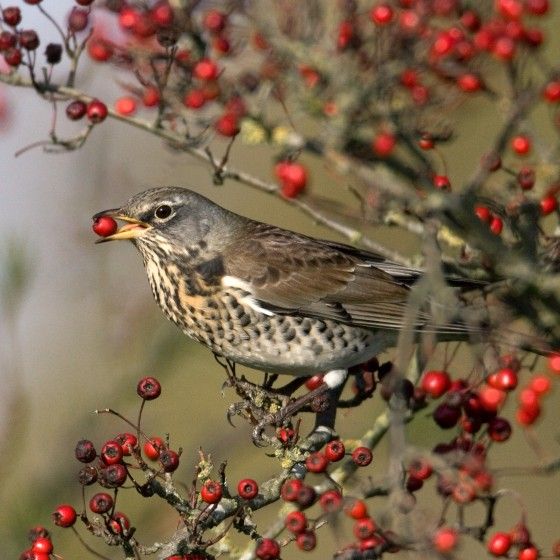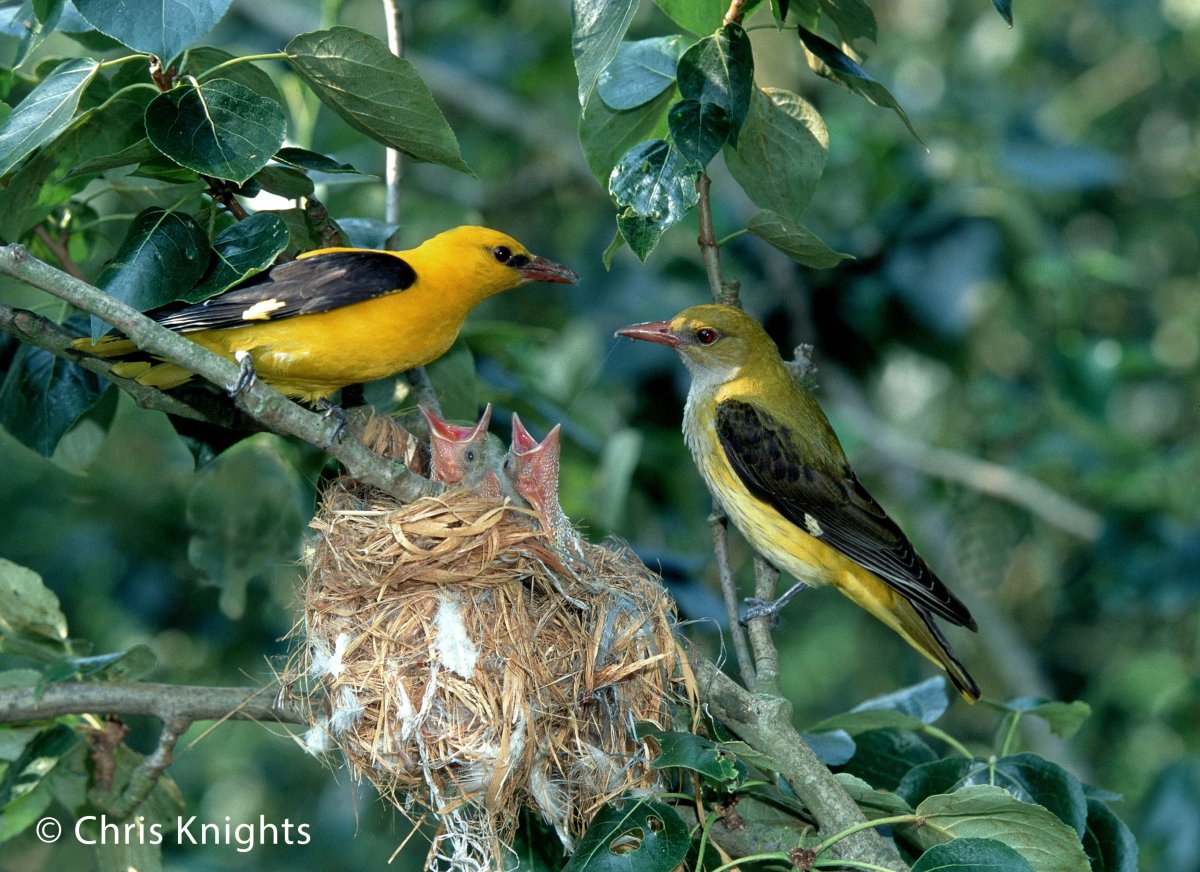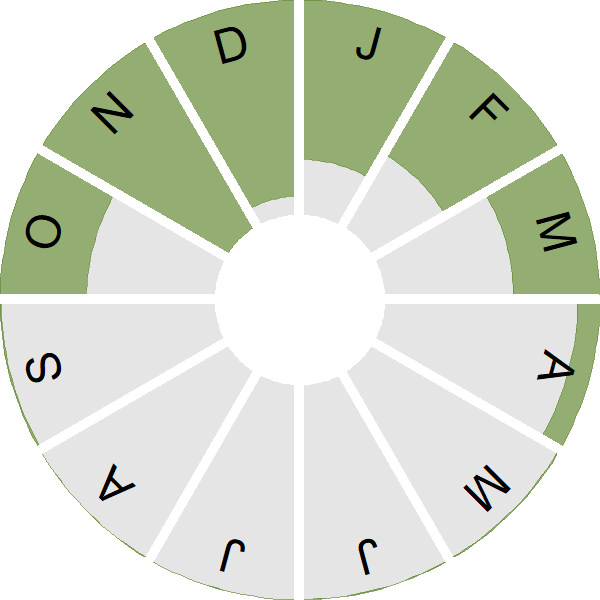Fieldfare

Introduction
The grey-headed, chestnut-backed Fieldfare is the largest of the thrushes, and visits Britain & Ireland during the winter months.
Fieldfares begin arriving on the UK's eastern coasts from Fennoscandia, western Russia and eastern Europe during early October. Numbers vary each year and are dependent on berry crops closer to their breeding grounds. In years when crops are poor, Fieldfares move in large numbers in search of berries elsewhere and it is under these conditions that the largest numbers occur in Britain & Ireland.
Ringing data demonstrate that Fieldfares visiting the UK have been found in 18 different countries. In some years one or two pairs breed in upland parts of the UK. Fieldfare has been on the UK Red List since 2009.

Key Stats
Identification
ID Videos
This section features BTO training videos headlining this species, or featuring it as a potential confusion species.
Redwing and Fieldfare
#BirdSongBasics: Redwing and Fieldfare
GBW: Redwing and Fieldfare
Songs and Calls
Call:
Flight call:
Status and Trends
Conservation Status
Population Change
The Fieldfare is predominantly a winter visitor to the UK from Fennoscandia and the numbers breeding in the UK are tiny in comparison. There has been a strong decrease in breeding numbers over the 25 years to 2019 and just a handful of breeding records have been reported to the RBBP in recent years,with a mean of just one breeding pair over the five-year period 2015–2019 (Eaton et al. 2021).
Distribution
Fieldfares are widely distributed in winter, with the exception of major urban areas and the highest ground in northern Scotland and in northwest Ireland. They shows a preference for low-lying land, where they feed in open farmland, hedgerows and woodland, only moving into gardens during harsh winter weather. The highest concentrations are found in southeast and central England. Outside winter, Fieldfares are a very rare breeder, with confirmed breeding during 2008–11 recorded in just four locations, three in Scotland and one in northern England.
Occupied 10-km squares in UK
or view it on Bird Atlas Mapstore.
or view it on Bird Atlas Mapstore.
European Distribution Map
Distribution Change
Winter range has changed little. The breeding range appears to have shrunk but this may be an artefact of many previous Fieldfare records being assigned breeding evidence when in fact they were late-departing winter migrants.
Change in occupied 10-km squares in the UK
or view it on Bird Atlas Mapstore.
or view it on Bird Atlas Mapstore.
Seasonality
Fieldfare is largely a winter visitor, arriving from continental breeding grounds in October and remaining into late winter and early spring. The tiny breeding population is rarely encountered on complete lists and does not appear here.
Weekly pattern of occurrence
The graph shows when the species is present in the UK, with taller bars indicating a higher likelihood of encountering the species in appropriate regions and habitats.

Movement
Britain & Ireland movement
Foreign locations of birds ringed or recovered in Britain & Ireland
Dots show the foreign destinations of birds ringed in Britain & Ireland, and the origins of birds ringed overseas that were subsequently recaptured, resighted or found dead in Britain & Ireland. Dot colours indicate the time of year that the species was present at the location.
- Winter (Nov-Feb)
- Spring (Mar-Apr)
- Summer (May-Jul)
- Autumn (Aug-Oct)

European movements
EuroBirdPortal uses birdwatcher's records, such as those logged in BirdTrack to map the flows of birds as they arrive and depart Europe. See maps for this species here.
The Eurasian-African Migration Atlas shows movements of individual birds ringed or recovered in Europe. See maps for this species here.
Biology
Productivity and Nesting
Nesting timing
Egg measurements
Clutch Size
Survival and Longevity
Survival is shown as the proportion of birds surviving from one year to the next and is derived from bird ringing data. It can also be used to estimate how long birds typically live.
View number ringed each year in the Online Ringing Report.
lifespan
Survival of adults
Survival of juveniles
Biometrics
Wing length and body weights are from live birds (source).
Wing length
Body weight
Ring Size
Classification, names and codes
Classification and Codes
- Order: Passeriformes
- Family: Turdidae
- Scientific name: Turdus pilaris
- Authority: Linnaeus, 1758
- BTO 2-letter code: FF
- BTO 5-letter code: FIELD
- Euring code number: 11980
Alternate species names
- Catalan: griva cerdana
- Czech: drozd kvícala
- Danish: Sjagger
- Dutch: Kramsvogel
- Estonian: hallrästas e. paskrästas
- Finnish: räkättirastas
- French: Grive litorne
- Gaelic: Liath-thruisg
- German: Wacholderdrossel
- Hungarian: fenyorigó
- Icelandic: Gráþröstur
- Irish: Sacán
- Italian: Cesena
- Latvian: pelekais strazds, plers
- Lithuanian: smilginis strazdas
- Norwegian: Gråtrost
- Polish: kwiczol
- Portuguese: tordo-zornal
- Slovak: drozd cvíkota
- Slovenian: brinovka
- Spanish: Zorzal real
- Swedish: björktrast
- Welsh: Socan Eira
Research
Causes of Change and Solutions
Causes of change
Reasons for the decline in numbers of breeding Fieldfare in the UK are not known.
Publications (1)
The risk of extinction for birds in Great Britain
Author: Stanbury, A., Brown, A., Eaton, M., Aebischer, N., Gillings, S., Hearn, R., Noble, D., Stroud, D. & Gregory, R.
Published: 2017
The UK has lost seven species of breeding birds in the last 200 years. Conservation efforts to prevent this from happening to other species, both in the UK and around the world, are guided by species’ priorities lists, which are often informed by data on range, population size and the degree of decline or increase in numbers. These are the sorts of data that BTO collects through its core surveys.
01.09.17
Papers


